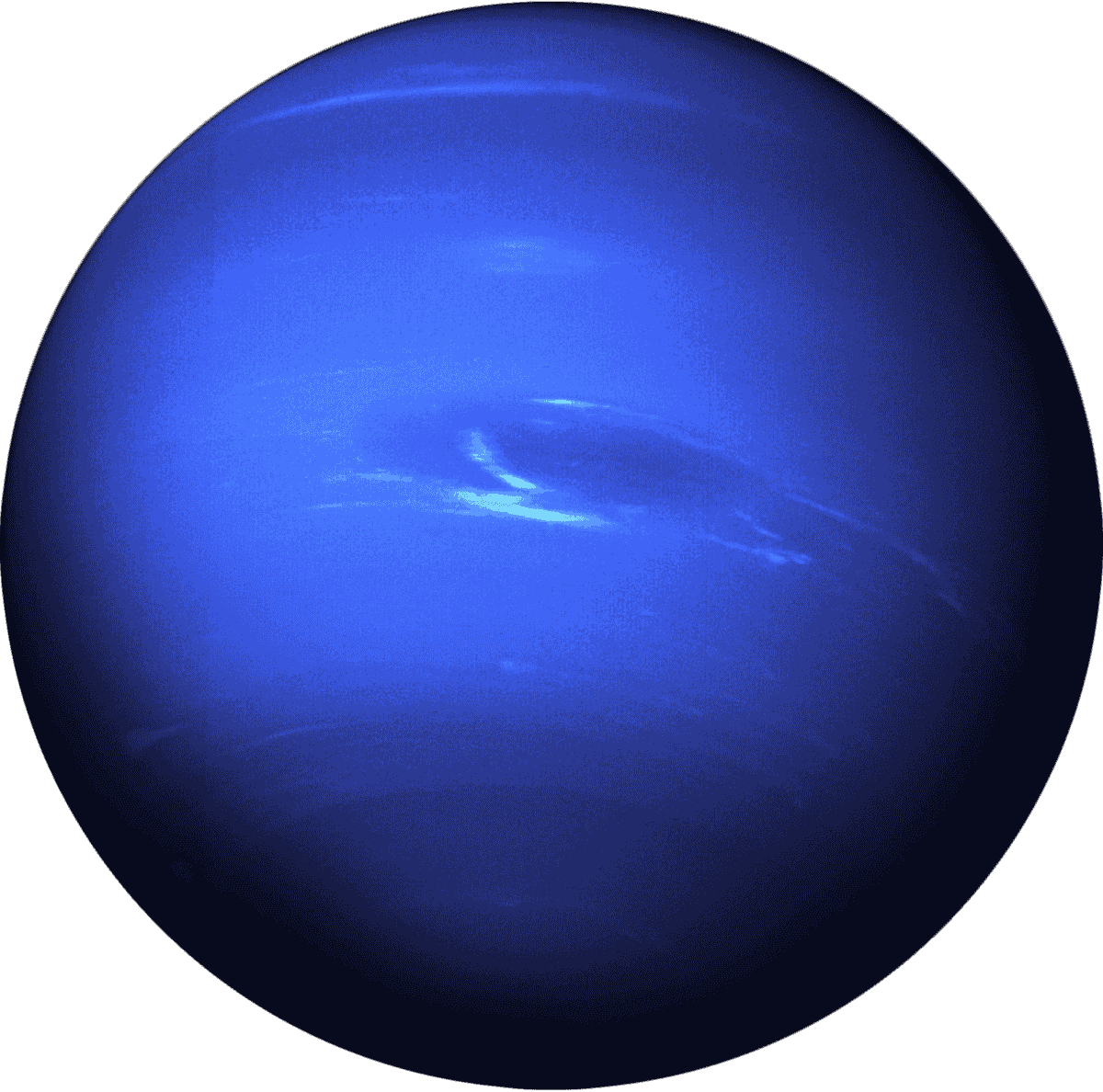Neptune is the eighth and farthest known planet from the Sun, shrouded in mystery and swirling with the most powerful winds in the solar system. Its deep blue color comes from methane in its atmosphere, which absorbs red light and reflects blue, giving Neptune its signature hue.
Extreme Weather & Atmosphere
- Neptune's atmosphere is composed primarily of hydrogen, helium, and methane, with dynamic weather patterns and supersonic jet streams reaching speeds of over 2,100 km/h (faster than the speed of sound).
- Massive storms, such as the Great Dark Spot, appear and disappear, showcasing the planet's turbulent nature.
- Clouds of frozen methane and ammonia drift across the planet, creating striking white and blue bands.
Distance & Light
Located about 4.5 billion km from the Sun, Neptune receives sunlight that is 900 times fainter than on Earth, resulting in a world of perpetual twilight and frigid temperatures averaging -201°C.
Moons & Rings
Neptune has a faint ring system and at least 16 known moons. Its largest moon, Triton, is unique for its retrograde orbit, suggesting it was captured from the Kuiper Belt. Triton is geologically active, with cryovolcanoes that erupt nitrogen frost and a surface among the coldest in the solar system.
Neptune is a dark, dynamic, and violent world, ruling over the cold, lonely edge of our planetary neighborhood. Its mysteries continue to inspire astronomers and planetary scientists, making it a key target for future exploration.
